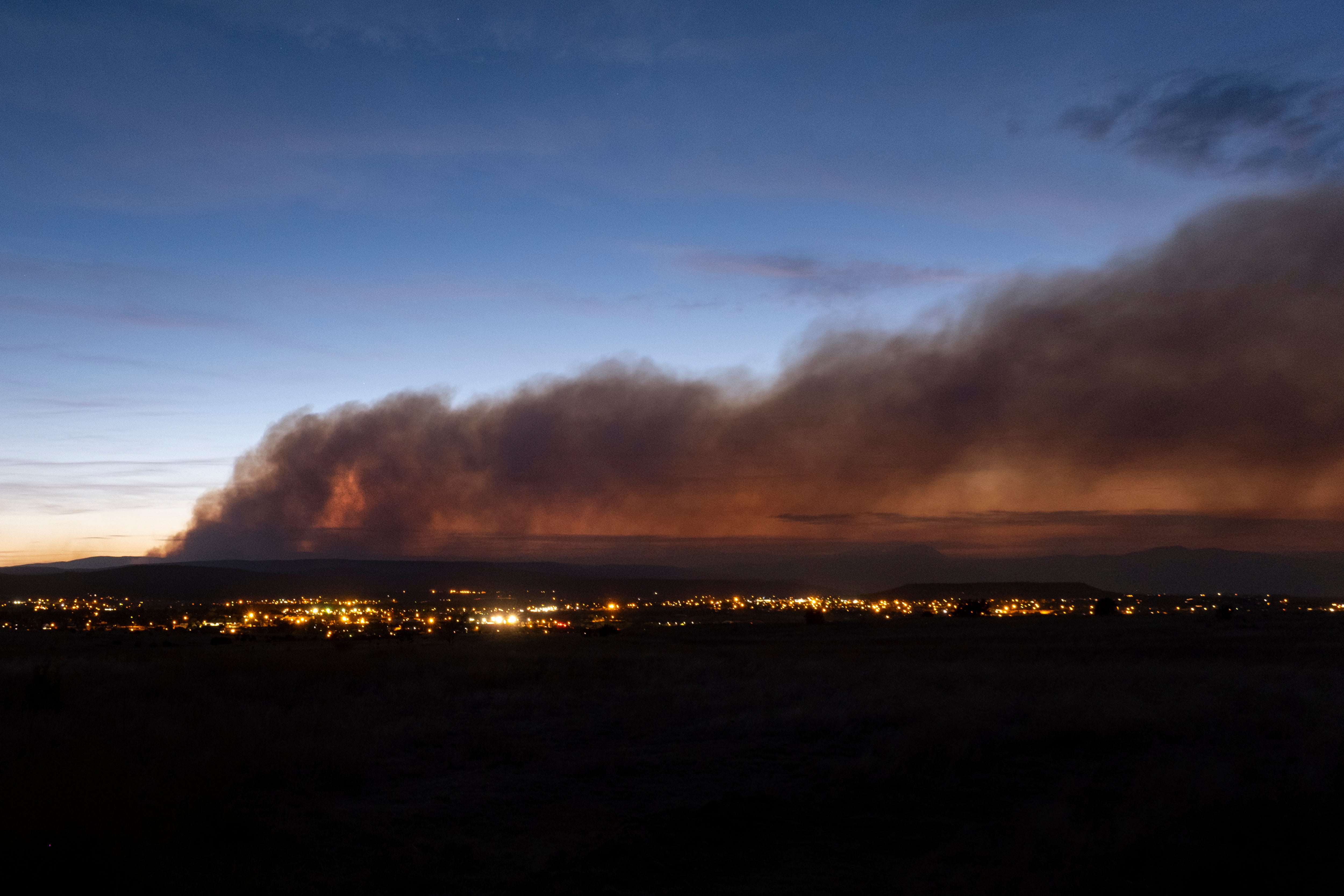New Mexico wildfire advances in Rocky Mountains foothills
The largest wildfire burning in the United States is heading toward mountain resort towns in northern New Mexico

Your support helps us to tell the story
From reproductive rights to climate change to Big Tech, The Independent is on the ground when the story is developing. Whether it's investigating the financials of Elon Musk's pro-Trump PAC or producing our latest documentary, 'The A Word', which shines a light on the American women fighting for reproductive rights, we know how important it is to parse out the facts from the messaging.
At such a critical moment in US history, we need reporters on the ground. Your donation allows us to keep sending journalists to speak to both sides of the story.
The Independent is trusted by Americans across the entire political spectrum. And unlike many other quality news outlets, we choose not to lock Americans out of our reporting and analysis with paywalls. We believe quality journalism should be available to everyone, paid for by those who can afford it.
Your support makes all the difference.The largest wildfire burning in the United States was heading toward mountain resort towns in northern New Mexico on Wednesday, prompting officials to issue another set of warnings for more people to prepare to evacuate as the fast-moving fire picks up momentum.
Fire officials said the blaze was racing up slopes and along exposed ridge lines while tossing embers into the air that were carried ahead of the fire by gusting winds. After growing more than 50 square miles (130 square kilometers) in a single day, the fire has now charred more than 370 square miles (958 square kilometers) of tinder-dry forest since it started last month.
Two more days of windy and dangerously bone-dry conditions are predicted before the winds are expected to ease on Friday. The winds have often made it too dangerous for aircraft to dump water on the fire and lay retardant to slow its advance through extremely dry Ponderosa pine forests in Rocky Mountains foothills.
“This is tough firefighting business right here,” fire Incident Commander Dave Bales said in a briefing. “This is not easy, especially in the fuel types were in, in the Ponderosa pine, mixed conifer, even down into the grass. When we can’t fly aircraft, when we can’t get people on the direct edge of the fire, when it’s spotting over us, that’s a huge concern for us.”
Crews were mostly concerned about the potential for the massive fire to spread farther north toward small villages in the Rincon Mountains and rural towns that include the skiing and outdoor resort communities of Angel Fire and Taos.
Firefighters were working to protect buildings overnight around the towns of Mora and Holman, where Highway 518 north to Taos was closed because of smoke and fire danger. Authorities stressed there was no immediate threat to communities near Taos but new alerts for evacuations were issued for some locations.
“Coming up toward Taos, Black Lake, Angel Fire, there is the possibility with the models we are running that those areas are going to see fire,” Todd Abel, a fire operations chief, said Tuesday evening.
Crews have been trying to direct flames around homes on the northern and southern ends of the fire — bulldozing firebreaks, putting up sprinklers, clearing trees and raking pine needles. More than 1,800 firefighters and support personnel are assigned to the blaze.
A federal disaster already has been declared because of the blaze, which is partly the result of a preventative fire that escaped containment after it was set in early April to clear brush and small trees so they could not serve as wildfire fuel. That fire merged with another wildfire several weeks later.
Crews also were battling smaller fires elsewhere in New Mexico and Arizona.
___
Associated Press writer Scott Sonner contributed to this report from Reno, Nevada.